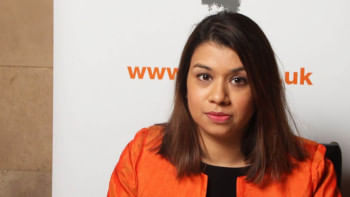Patriotism unbound in Raga Desh
Raga “Desh” (also known as Des and Desh Malhar) represents all patriotic connotations including mother, soil, humankind, nature and all the literary and cultural essence of a country. A raga generally contains two major parts -- Purbanga (from 'Sa' to 'Pa') and Uttaranga (from 'Ma' to 'Sa'). 'Ma' and 'Pa' are common to both the ang.
Purbanga of the raga depicts patriotism while Uttaranga of the genre portrays love for the beloved. Raga “Desh” generates the rasa of Shringar (beauty and illusion) in Uttaranga and Veer rasa (heroism and boldness) in Purbanga.
According to music exponents, a feeling of pride and close attachment to one's own heritage works in the minds of listeners of the raga. The raga evokes nostalgic childhood memories mingled with zeal, feelings and love. All evocative memories like plucking shapla on a rainy afternoon water bodies; fishing; hurrying for home with cattle prior to the onset of rain and reaping and harvesting crops serenade the melody of raga “Desh”. One can get immersed in the raga with accomplished live vocals or instruments in a bucolic music lounge circled with trees including kadom, malati and madhavi in a monsoon yet moonlit night of second prahar (9pm-12am).
An apt rendition or recital of the raga showcases the dazzling beauty of a blissful butterfly celebrating greenery all around. The raga has frequently been used in patriotic compositions including “Vande Mataram” (penned by Bankim Chandra Chattopadhyay), the national song of India.
Tagore greets the advent of monsoon with one of his compositions “Esho Shyamalo Sundaro” set on the monsoon raga while our National Poet Kazi Nazrul Islam's “Desh” composition “Pia Pia Pia Papia Pukarey” makes us celebrate pathos.
Set on the raga, the great grandson of the legendary Ustad Inayat Hussain Khan Saheb (the founder of the 'Rampur Sahaswan Gharana'), Ustad Rashid Khan recorded a beautiful Kheyal on the bandish “Karam Kar Di Je Khwaja Moinuddin” that his grandfather created. Rashid Khan's stunning performance of a thumri “Mora Saiyan Bulabe Aadhiraat Ko” and a bhajan “Palna Jhuley Nandalal” are also on “Desh”.
Pandit Shivkumar Sharma's recital of “Desh” on his santoor is breathtaking while Pandit Pt. Hariprasad Chaurasia's flute recital on the raga takes us to yesteryears.
“Pukar” in the rendition of “Desh” often produces an exquisite emotive plea that best expresses the patriotic zeal! Ustad Mehdi Hassan's thumri “Umarh Ghumarh Ghana Aayi Rey Badra” and Pandit Ajoy Chakraborty's rapturous rendition of the song “Rimijhim Rimijhim Elo Rey Shraban” celebrate both romance and melancholy of the monsoon raga. Ustad Ghulam Ali's record of the ghazal “Nazar Se Nazar Ko Salam Aa Rahe Hain” superbly pours the rasa of the raga.
Raga “Desh”, audav-sampurna in nature, emerges from Khamaj thaat. The swar 'Re' is very prominent, quite a few times the singers rest on 'Re', making it a keynote to the melody. The meend from 'Ma' to 'Re' via 'Ga' is one of the most vital features of the raga. The arohana via shuddha Ni and the transition from 'Re' to komal 'Ni' in the avorahana showcases an important part of the melody in the raga. “Desh” is quite close to neighboring raga “Tilak Kamod”, and hence, requires skilful rendition to separate them.


 For all latest news, follow The Daily Star's Google News channel.
For all latest news, follow The Daily Star's Google News channel. 



Comments